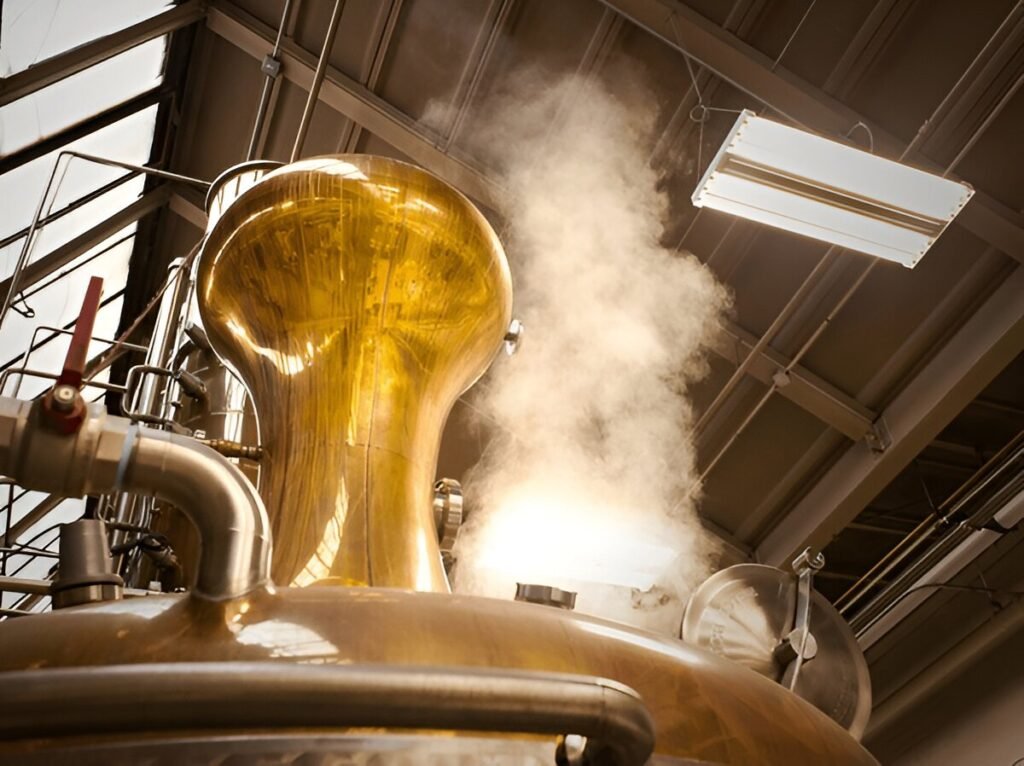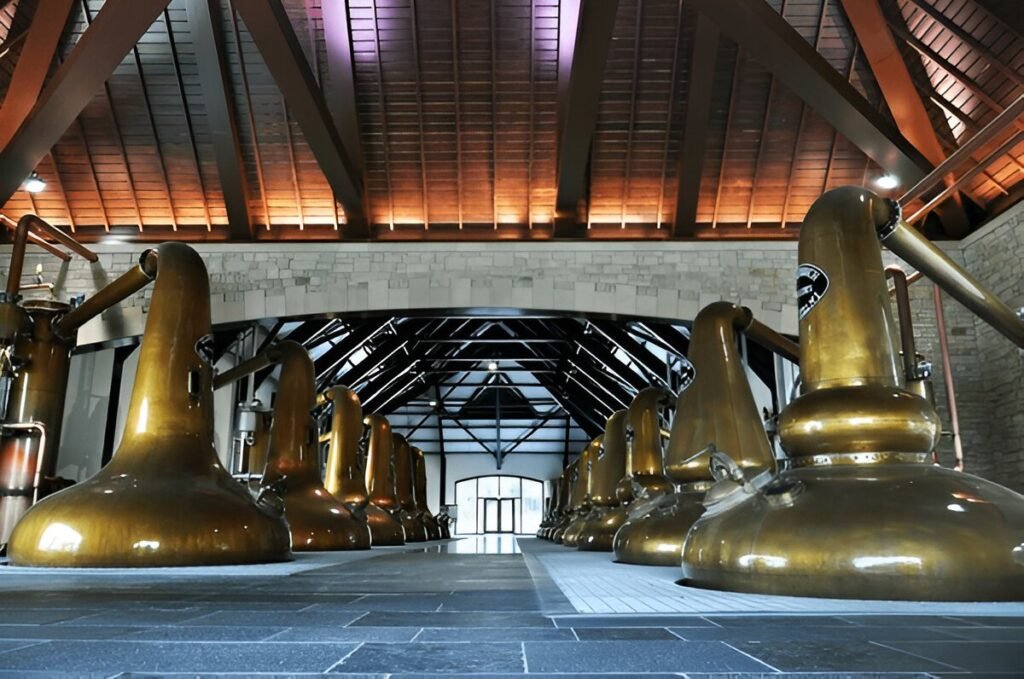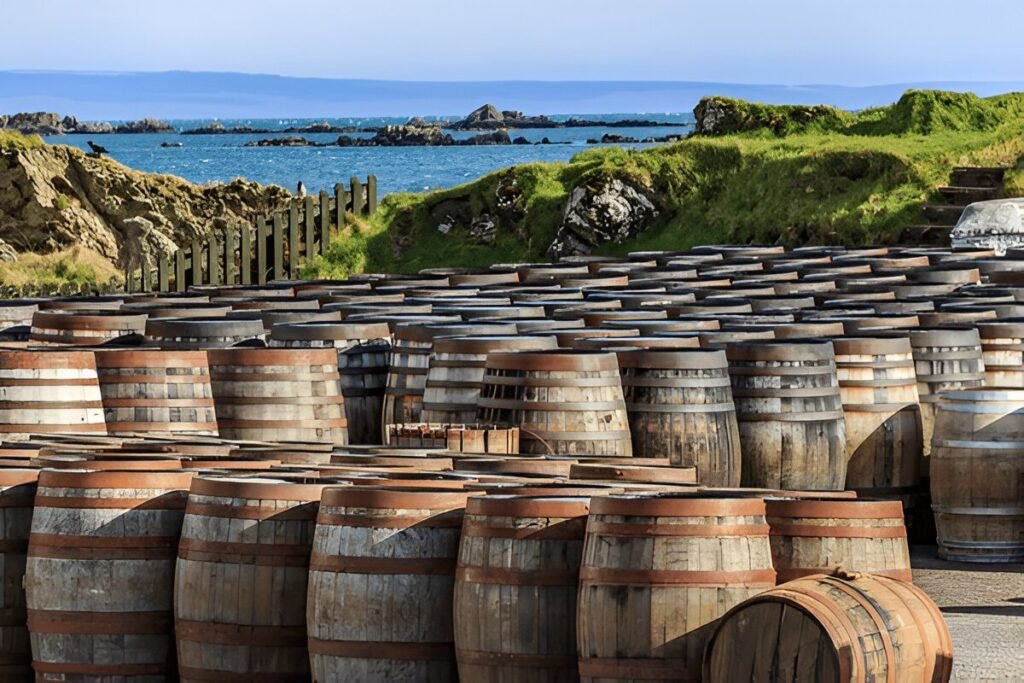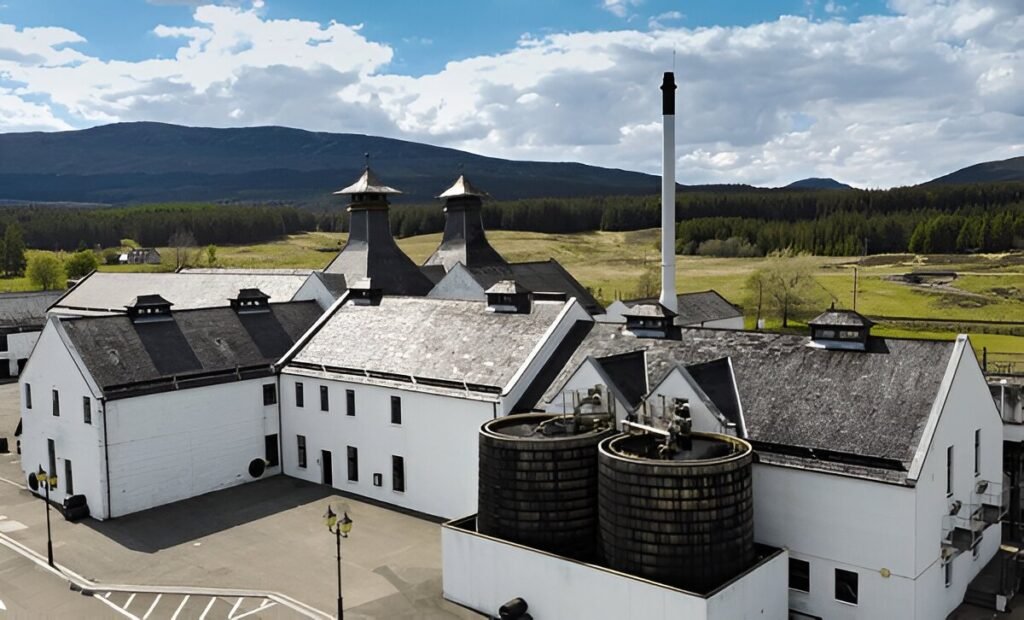Introduction
Scotland is world-renowned for its whisky, often referred to as “the water of life” (Uisge Beatha in Gaelic). With over 140 active distilleries spread across its five whisky-producing regions, Scotland offers an unparalleled whisky experience. Each region produces whisky with distinct characteristics, from the smoky and peaty malts of Islay to the smooth and honeyed notes of Speyside.
In this guide, we’ll take you on a tour of Scotland’s most famous whisky distilleries, exploring their history, production methods, and what makes each of them special. Whether you’re a whisky connoisseur or a curious traveler, this guide will help you navigate Scotland’s rich whisky culture.
The Five Whisky Regions of Scotland
Scotland’s whisky is divided into five main regions, each with its own unique style.
1. Speyside: The Whisky Capital of Scotland
Speyside, home to over half of Scotland’s distilleries, is known for its elegant, fruity, and smooth whiskies.
Must-Visit Distilleries in Speyside:
- The Macallan – One of the most prestigious names in whisky, known for its rich, sherried style.
- Glenfiddich – The world’s best-selling single malt, offering a variety of aged expressions.
- Aberlour – A favorite among whisky lovers, known for its sherried, full-bodied taste.
Best Whisky to Try: Macallan Sherry Oak 18-Year-Old – A luxurious, complex whisky with dried fruit and spice notes.
2. Islay: The Land of Peat and Smoke
Islay whiskies are bold, smoky, and heavily peated, making them some of the most distinctive in Scotland.
Top Distilleries on Islay:
- Laphroaig – Famous for its intense medicinal, smoky character.
- Ardbeg – Produces some of the peatiest whiskies in the world.
- Lagavulin – Known for its deep, rich, and smoky profile.
Best Whisky to Try: Ardbeg 10-Year-Old – A powerhouse of peat, citrus, and maritime flavors.
3. Highlands: Diverse and Powerful
The Highland region is vast, producing a wide range of whisky styles, from light and floral to rich and full-bodied.
Famous Highland Distilleries:
- Glenmorangie – Known for its elegant and citrusy whisky, aged in various cask types.
- Dalmore – Produces luxurious, sherry-finished whisky with deep chocolate and spice notes.
- Oban – A small but mighty distillery offering balanced, maritime-influenced whisky.
Best Whisky to Try: Dalmore 15-Year-Old – A rich and velvety whisky with orange, spice, and dark chocolate flavors.
4. Lowlands: The Gateway to Scotch Whisky
Lowland whiskies are light, floral, and easy-drinking, making them great for beginners.
Notable Lowland Distilleries:
- Auchentoshan – One of the few distilleries using triple distillation for an ultra-smooth taste.
- Glenkinchie – Often called “The Edinburgh Malt,” producing a delicate, floral whisky.
Best Whisky to Try: Auchentoshan Three Wood – A whisky aged in bourbon, Oloroso, and Pedro Ximénez sherry casks for a layered, fruity flavor.
5. Campbeltown: The Hidden Gem
Once home to over 30 distilleries, Campbeltown now has only three active distilleries but remains a cherished whisky region.
Key Distilleries in Campbeltown:
- Springbank – Produces a unique, complex whisky with a mix of peat, fruit, and spice.
- Glen Scotia – A lesser-known gem offering maritime and vanilla-rich whisky.
Best Whisky to Try: Springbank 12-Year-Old – A beautifully balanced whisky with hints of smoke, toffee, and dried fruit.
The Whisky-Making Process: From Grain to Glass

Understanding how Scotch whisky is made enhances the tasting experience.
1. Malting
Barley is soaked, germinated, and dried in kilns, sometimes using peat smoke to impart smoky flavors.
2. Mashing
The malted barley is ground into a coarse flour (grist), mixed with hot water to extract sugars.
3. Fermentation
Yeast is added to the sugary liquid (wort) to create alcohol, producing a beer-like liquid called wash.
4. Distillation
The wash is distilled in copper pot stills, typically twice, to concentrate alcohol and flavors.
5. Maturation
The spirit is aged in oak casks (bourbon, sherry, or wine barrels), developing flavors over years or decades.
6. Bottling
Once matured, the whisky is diluted (if necessary) and bottled, often at 40-46% ABV.
The Best Whisky Tours in Scotland

Visiting a distillery offers a first-hand look at whisky-making and a chance to sample rare expressions.
1. The Macallan Estate (Speyside)
- One of the most prestigious and modern distillery tours in Scotland.
- Features a futuristic visitor center and private cask tastings.
2. Lagavulin Distillery (Islay)
- Offers an intimate tasting experience with views of the sea.
- Try Lagavulin 16-Year-Old, one of Scotland’s most loved single malts.
3. Glenkinchie Distillery (Lowlands)
- The closest distillery to Edinburgh, perfect for a day trip.
- Offers guided tastings of light and floral Lowland whiskies.
4. Springbank Distillery (Campbeltown)
- One of the few distilleries to perform the entire whisky-making process on-site.
- Home to three distinct whisky styles: Springbank, Hazelburn, and Longrow.
How to Taste Whisky Like a Pro

Drinking whisky isn’t just about sipping it straight—there’s an art to appreciating its flavors.
1. Choose the Right Glass
A Glencairn glass is best for concentrating aromas.
2. Observe the Color
Lighter whisky = bourbon cask; darker whisky = sherry cask.
3. Smell Before Sipping
Take a deep sniff and identify notes like vanilla, smoke, honey, or spice.
4. Sip and Hold
Let the whisky coat your tongue before swallowing to detect complex flavors.
5. Add Water (If Needed)
A few drops of water opens up the flavors of stronger whiskies.
Conclusion
Scotland’s whisky distilleries offer a rich journey through history, craftsmanship, and regional diversity. Whether you prefer the peaty intensity of Islay, the smooth elegance of Speyside, or the boldness of the Highlands, there’s a perfect dram waiting for you.
A visit to Scotland’s distilleries is more than just tasting whisky—it’s experiencing a centuries-old tradition that defines Scottish culture.
So, are you ready to raise a glass and embark on your Scottish whisky adventure?












